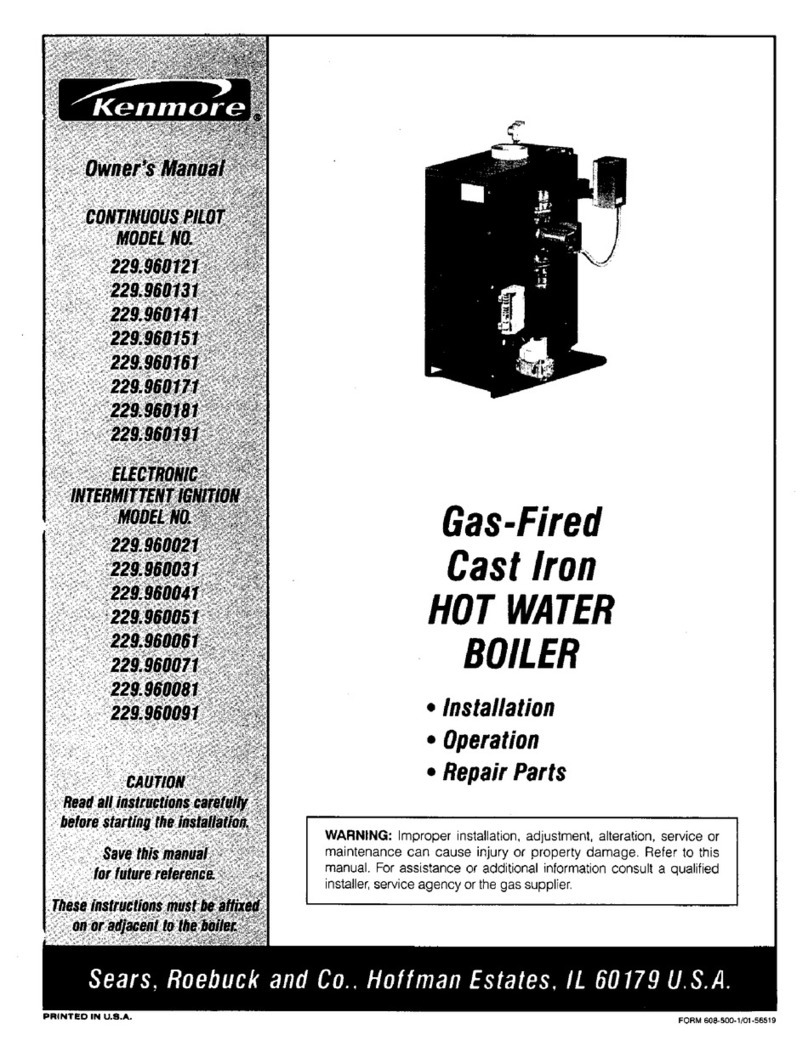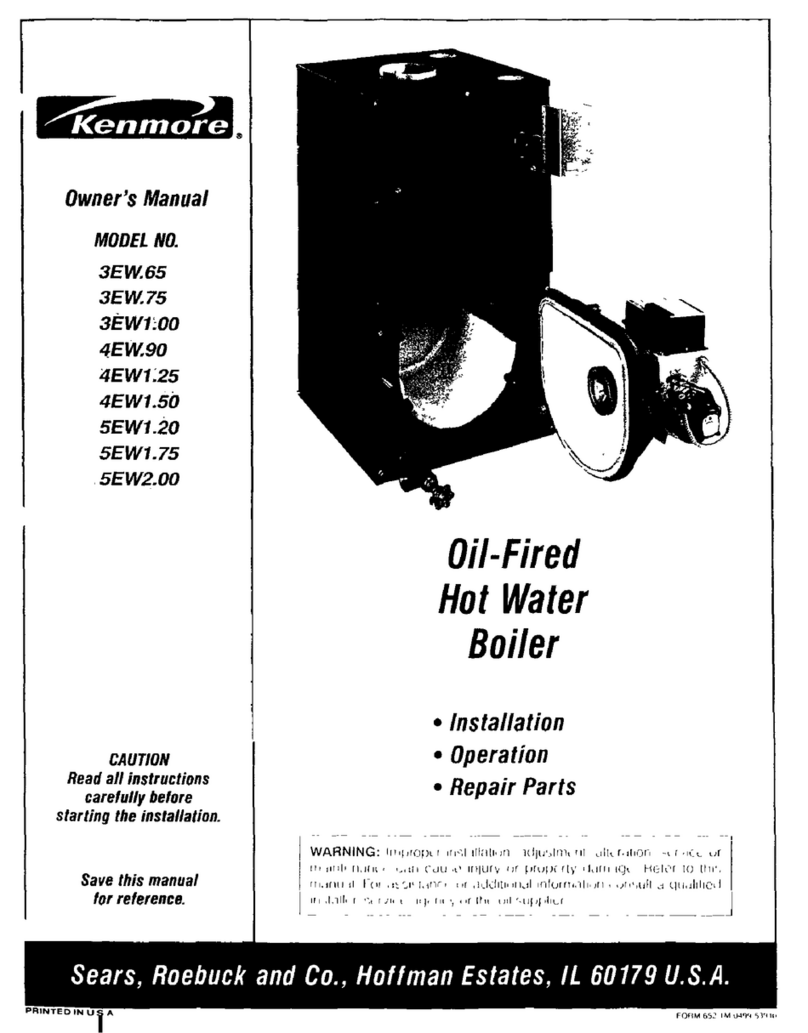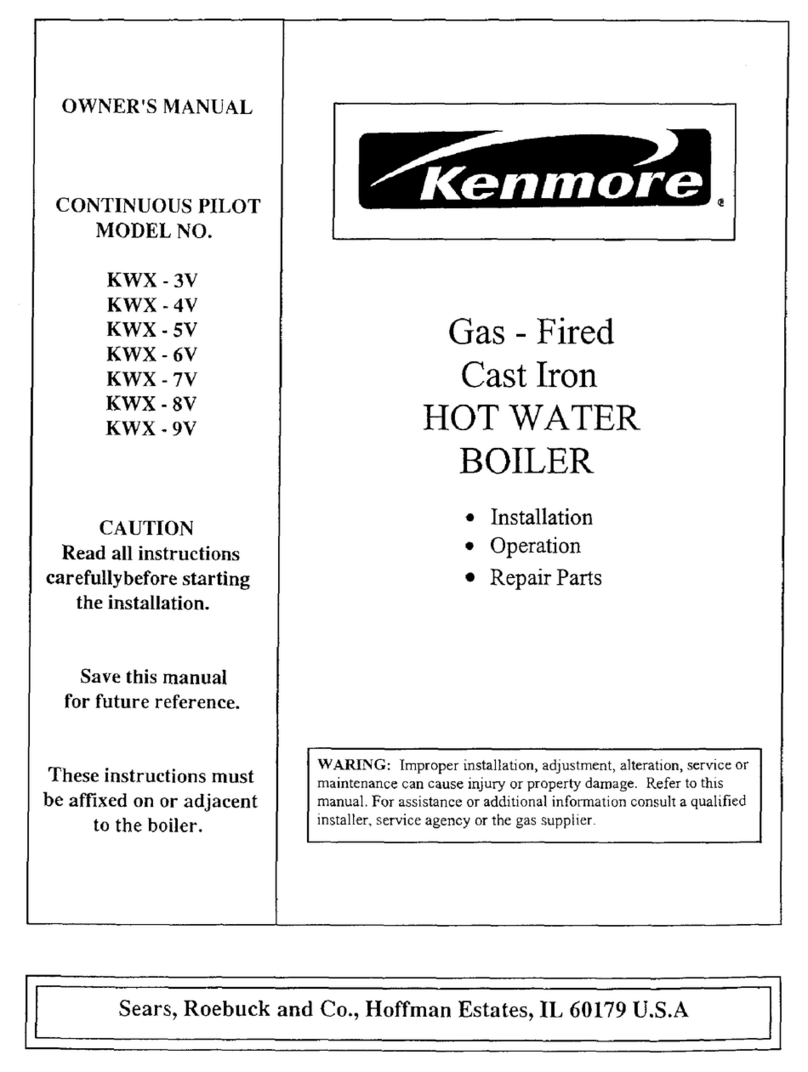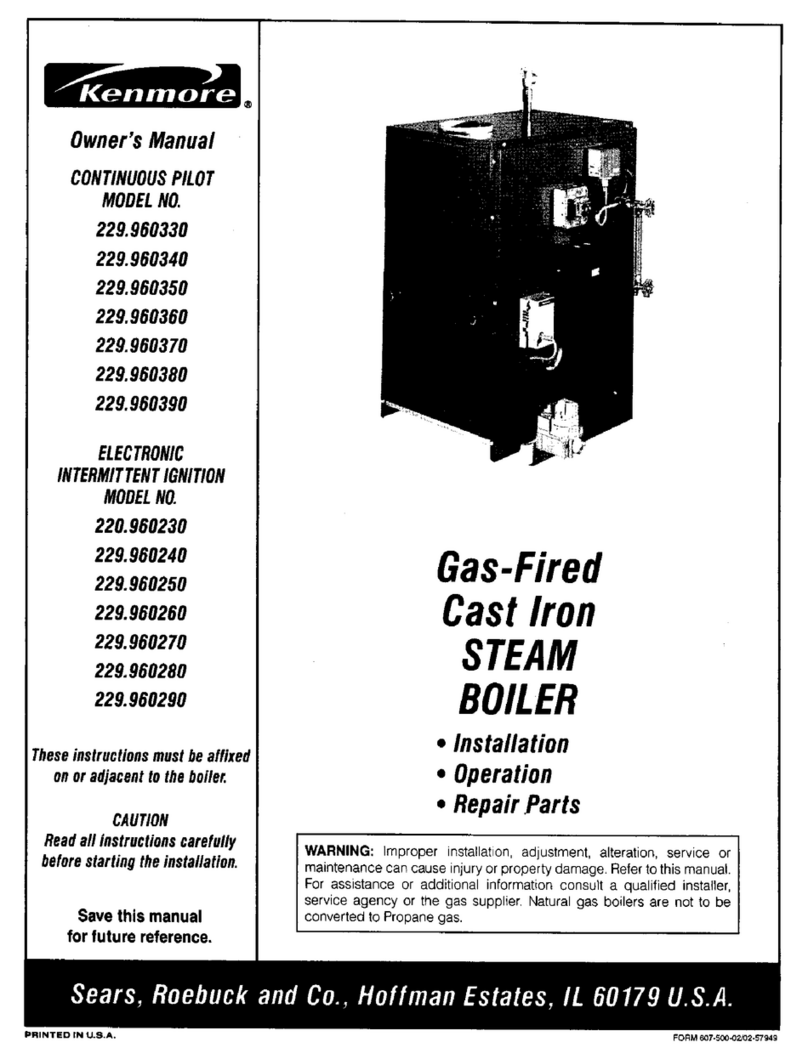These low pressure gas-fired hot water boilers are design certified by CSA International, for use with
natural and propane gases. The boilers are constructed and hydrostatically tested for a maximum work-
ing pressure of 50 psig (pounds per square inch gauge) in accordance with A.S.M.E. (American Society
of Mechanical Engineers) Boiler and Pressure Vessel Code, Section IV Standards for heating boilers.
The Boilers are certified in accordance with ANSI (American National Standards Institute) Z21.13
standards as gas-fired, direct vent, condensing, hot water boilers.
The Heating Capacity indicates the amount of heat available after subtracting the losses up the stack.
Most of this heat is available to heat water. A small portion is heat loss from the jacket and surfaces of
the boiler, and it is assumed that this heat stays in the structure. The Net I=B=R Rating represents the
portion of the remaining heat that can be applied to heat the radiation or terminal units (i.e. finned tube
baseboard, cast iron radiators, radiant floor, etc.). The difference between the Heating Capacity and the
Net I=B=R Rating, called the piping and pickup allowance, establishes a reserve for heating the volume
of water in the system and offsetting heat losses from the piping. The Net I=B=R Ratings shown are
based on a piping and pickup factor of 1.15 in accordance with the I=B=R Standard as published by the
Hydronics Institute. The Net t=B=R Rating of the boiler selected should be greater than or equal to the
calculated peak heating load (heat toss) for the building or area(s) served by the boiler and associated hot
water heating systems. The manufacturer should be consulted before selecting a boiler for installations
having unusual piping and pickup requirements.
Complete all of _e following prior to installing the boiler.
This boiler product is a gas-fired, direct vent, con-
densing boiler and must be installed in accordance
with all applicable federal, state and local building
codes including, but not limited to the following:
United States -Installation shall conform
with National Fuel Gas Code (NFPA-54/ANSI
Z223.1 - latest revision)
Canada - Installation shall be in accordance
with CSA-B149.1 and .2 installation codes.
• Check to be sure you have selected the boiler
with the proper capacity before continuing the in-
stallation. The I=B=R Rating of the boiler selected
should be greater than or equal to the calculated
peak heating load (heat loss) for the building or
area(s) served by the boiler and associated hot
water heating systems. See Section IV, "Boiler
Ratings and Capacities, "for more information.
• Heat loss calculations should be based on
approved industry methods.
Where required by the authority having jurisdiction,
the installation must conform to the American Soci-
ety of Mechanical Engineers Safety Code for Con-
trols and Safety Devices for Automatically Fired
Boilers, No.CSD-I.
The installation must conform to the requirements
of the authority having jurisdiction or, in the ab-
sence of such requirements, to the National Fuel
Gas Code, ANSI Z223.1 - latest revision.
Installers- Follow local regulations with re-
spect to installation of CO (Carbon Monox-
ide) Detectors. Follow maintenance recom-
mendations in this manual.
Before selecting a location for the boiler, the follow-
ing should be considered. Each boiler considered
for installation must be:
•Supplied with the correct type of gas (natural
gas or propane).
•Connected to a suitable combustion air intake pip-
ing system to supply the correct amounts of fresh
(outdoor) air for combus_on (max. leng_ 60').
• Connected to a suitable venting system to re-
move the hazardous products of gas combus-
tion (max. length 60').
































